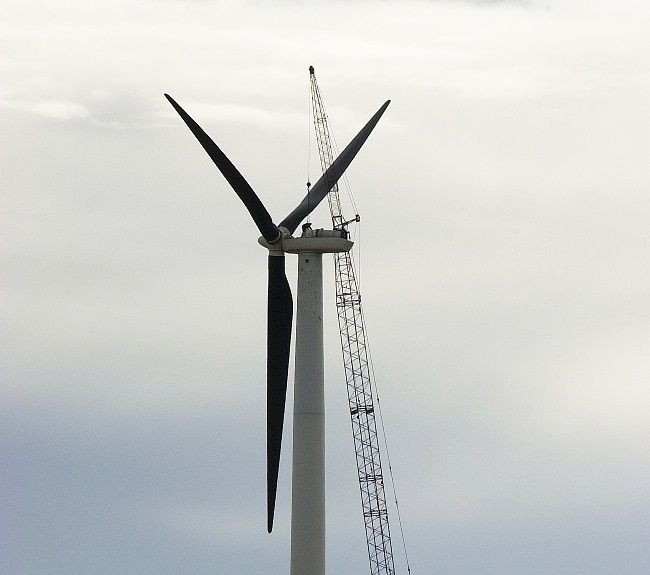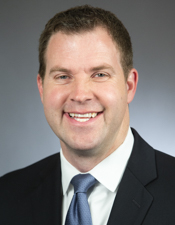House climate panel considers quickening push to carbon-free energy

Completely carbon-free by 2040. That’s the goal of the “100% Clean Energy Standard” the House Climate and Energy Finance and Policy Committee contemplated Thursday. It would require that all of a utility’s electric power should come from carbon-free resources by 2040.
The concept has not been officially introduced as a bill, but its sponsor, Rep. Jamie Long (DFL-Mpls), the committee chair, wanted to have a discussion of its merits at an informational hearing before formally presenting it next Thursday. And the meeting certainly inspired debate, as 28 testifiers offered opinions. Most were favorable, but utilities and environmentalists expressed reservations.
A standard would be established for all utilities to supply customers with electricity generated from carbon-free resources, beginning at 65% in 2025 and increasing every five years to reach 100% in 2040.
Under the plan, the Public Utilities Commission would expand its view of net benefits to include those pertaining to labor, environmental justice and low-income populations. It would encourage the location of new generating facilities in communities that are losing generating facilities that use fossil fuels. And it would allow the commission to require prevailing wage for workers constructing wind and solar facilities.
Grace Arnold, interim commerce commissioner, emphasized job creation and opportune timing.
“Already, about 60,000 Minnesotans work in clean energy, most of them in rural Minnesota,” she said. “And, in the next two decades, about 70% of the state’s power plants are up for retirement.”
Amol Phadke, deputy of the International Energy Analysis Department, Energy Analysis and Environmental Impacts Division at Lawrence Berkeley National Laboratory, has led studies on transitions to renewable energy sources. He commended Minnesota for its moves in that direction.
“It’s important to act on climate change, but it’s also the best economic choice,” he said. “Clean energy costs have fallen much more quickly than anyone predicted. … One of the main criticisms of going clean was the cost to consumers. But the cost is now actually 10% lower than for non-renewable energy sources. … If we let the technologies compete with each other, we can reach 90% by 2035 nationally. And Minnesota does even better because of its significant wind resources.”
Cited by Rep. Glenn Gruenhagen (R-Glencoe) and a few skeptical testifiers were the blackouts experienced in California last summer, inspiring questions about whether the grid will be reliable enough with entirely carbon-free energy sources.
Phadke responded that the blackouts in his state were chiefly due to natural gas plants not coming online, and Steve Jorissen of Northeast Metro Climate Action added that Texas is the largest user of renewable energy and that it doesn’t have blackout problems.
The chief objections to the bill came from testifiers representing utilities, who found the mandates too inflexible about what kind of carbon-free energy sources to use.
“Legal mandates that come forward may do more to inhibit than enhance,” said Rick Evans, Xcel Energy’s director of regional governmental affairs, adding that new clean energy technologies may emerge that aren’t addressed in the plan.
While, overall, the proposal received good reviews from representatives of environmental organizations, concerns were expressed that waste incineration would continue to be allowed. More than one said that such plants have been proven toxic to nearby residents.
In a release Thursday, Gov. Tim Walz endorsed the idea and said his administration has three more proposals coming regarding clean energy. The others will concern prioritizing clean energy resources over fossil fuels when replacing power plants; raising standards for energy efficiency; and cutting greenhouse gas emissions from existing buildings in half by 2035.
Related Articles
Search Session Daily
Advanced Search OptionsPriority Dailies
Speaker Emerita Melissa Hortman, husband killed in attack
By HPIS Staff House Speaker Emerita Melissa Hortman (DFL-Brooklyn Park) and her husband, Mark, were fatally shot in their home early Saturday morning.
Gov. Tim Walz announced the news dur...
House Speaker Emerita Melissa Hortman (DFL-Brooklyn Park) and her husband, Mark, were fatally shot in their home early Saturday morning.
Gov. Tim Walz announced the news dur...
Lawmakers deliver budget bills to governor's desk in one-day special session
By Mike Cook About that talk of needing all 21 hours left in a legislative day to complete a special session?
House members were more than up to the challenge Monday. Beginning at 10 a.m...
About that talk of needing all 21 hours left in a legislative day to complete a special session?
House members were more than up to the challenge Monday. Beginning at 10 a.m...
